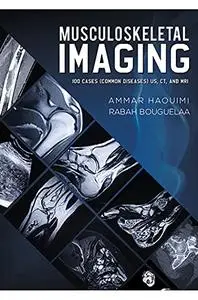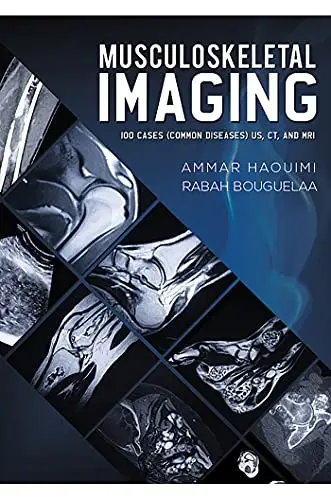Musculoskeletal Imaging: 100 Cases (Common Diseases) US, CT and MRI
by Ammar Haouimi & Rabah Bouguelaa
The book includes 100 cases (common and rare) with highly organised radiological description of the diseases. The cases are grouped into three chapters: Upper Limbs, Neck\/Trunk\/Spine and Lower Limbs. High quality images (X\-ray, US, CT and MRI). It covers all imaging modalities including conventional radiology, ultrasound\/Doppler, CT scan and MRI. The topics covered in the book represent the common and important diseases encountered in musculoskeletal imaging. The material presented for each case provides a thorough and comprehensive description of the disease entity, enabling the radiologist or the clinician to develop a clear concept of the entity through the different imaging modalities that are present. What is interesting in this book is one case per page. The book can be used as a mean of rapid revision of a large number of cases in a short time or as a test of knowledge by masking the radiological description and diagnosis and trying by using the clinical data and radiological images to describe first the pathology then propose a diagnosis.
by Ammar Haouimi & Rabah Bouguelaa
The book includes 100 cases (common and rare) with highly organised radiological description of the diseases. The cases are grouped into three chapters: Upper Limbs, Neck\/Trunk\/Spine and Lower Limbs. High quality images (X\-ray, US, CT and MRI). It covers all imaging modalities including conventional radiology, ultrasound\/Doppler, CT scan and MRI. The topics covered in the book represent the common and important diseases encountered in musculoskeletal imaging. The material presented for each case provides a thorough and comprehensive description of the disease entity, enabling the radiologist or the clinician to develop a clear concept of the entity through the different imaging modalities that are present. What is interesting in this book is one case per page. The book can be used as a mean of rapid revision of a large number of cases in a short time or as a test of knowledge by masking the radiological description and diagnosis and trying by using the clinical data and radiological images to describe first the pathology then propose a diagnosis.



